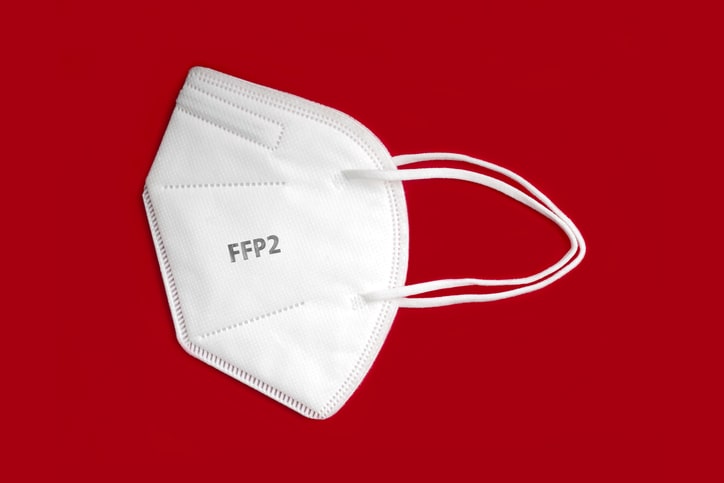
Chronic kidney disease (CKD), hypertension, and diabetes are leading contributors to excess health care costs, morbidity, and premature mortality in the United States. Previous research has examined biological and sociocontextual factors contributing to those diseases and the clinical outcomes associated with them. Disease development is linked with factors such as nutrition and dietary patterns and connected with social factors that include income, education, neighborhood racial composition, and neighborhood economic investment.
Explorations of the connections between diet and chronic disease include efforts to understand the effects of the built environment on access to healthy, nutritious food. Low food access urban areas are defined by the US Department of Agriculture as census tracts in which at least 500 people or 33% of the population live more than one-half mile from a supermarket, super center, or large grocery store. Communities with low food access tend to have lower levels of income and education, higher proportions of Black and Latino/Hispanic residents, and greater access to independent grocery stores and convenience stores than to chain and nonchain supermarkets.
According to Gaurang Garg, MD, and colleagues there are few data available on the association between access to nutritional food and incident chronic illness. Using electronic health record (EHR) data from health care institutions across Chicago, Illinois, merged with zip code-level grid mapping of supermarket access, the researchers conducted a retrospective cohort study to examine associations between neighborhood food environments and the risk of incident hypertension, diabetes, and CKD.
The study was also designed to test the hypothesis that zip codes with larger average distances to the nearest supermarket would have higher incidence of those diseases compared with zip codes with shorter average distances to the nearest supermarket. Results were reported in the American Journal of Kidney Diseases [2023;81(2):168-178].
The outcome of interest was the incidence of hypertension, diabetes, and CKD based on codes from the International Classification of Diseases, Ninth Revision, and/or blood pressure ≥140.90 mm Hg, hemoglobin A1c ≥6.5%, and estimated glomerular filtration rate <60 mL/min/1.73 m2. The cohort included 777,994 individuals without hypertension, diabetes, or CKD at baseline within the HealthLNK Data Repository that includes EHRs from seven health care institutions in Chicago. Study participants resided in one of 56 Chicago zip codes.
Using the average distance to a supermarket in each zip code, the zip codes were stratified into tertiles. Tertile 1 had the shortest distance; zip codes in tertiles 2 and 3 had average supermarket distances of 0.73 miles and 1.23 miles, respectively. Areas with the lowest access, in some cases nearly 2 miles to the nearest supermarket, were located primarily in southern and western neighborhoods.
Compared with those in zip code tertile 1, those in tertiles 2 and 3 were more likely to be female and have Medicare or Medicaid as insurance. The distribution of participants who were Hispanic was generally equal across tertiles. Most of those in the highest tertiles were Black, and the majority of participants in tertile 1 were White. Access to vehicles was relatively equal across tertiles.
Of the 777,944 participants, 408,608 developed hypertension, 51,380 developed diabetes, and 56,365 developed CKD during 2007-2012. In unadjusted analysis, compared with tertile 1, the zip codes in tertiles 2 and 3, respectively, were associated with higher incidence of hypertension (odds ratios [ORs], 1.22; 95% CI, 1.20-1.23 and 1.49; 95% CI, 1.47-1.50); prediabetes (ORs, 2.27; 95% CI, 2.03-2.52 and 3.14; 95% CI, 2.83-3.48); and diabetes (ORs, 1.94; 95% CI, 1.89-1.99 and 2.55; 95% CI, 2.49-2.61).
There was an association between zip codes in tertile 2 and a lower incidence of CKD (OR, 0.95; 95% CI, 0.93-0.97). There was no association between zip codes in tertile 3 and CKD incidence (OR, 1.00; 95% CI, 0.98-1.02).
Following adjustment for neighborhood factors (zip code-level median household income, racial and ethnic composition, and vehicle access), there were significant associations between supermarket distance tertile and incidence of hypertension (tertile 2: OR, 1.03; 95% CI, 1.02-1.05; tertile 3: OR, 1.04; 95% CI, 1.02-1.06). prediabetes (tertile 2: OR, 1.51; 95% CI, 1.33-1.71; tertile 3: OR, 1.78; 95% CI, 1.55-2.05). diabetes (tertile 2: OR, 1.27; 95% CI, 1.23-1.30; tertile 3: OR, 1.38; 95% CI, 1.33-1.43). and CKD (tertile 2: OR, 1.18; 95% CI, 1.15-1.21; tertile 3: OR, 1.33; 95% CI, 1.29-1.73). When distance to the nearest supermarket was included as a continuous variable, results were similar.
In models adjusted solely for individual factors (age, sex, race, ethnicity, and health insurance) there were significant associations with tertiles 2 and 3 and greater odds of prediabetes and diabetes, but lower odds of hypertension and CKD (prediabetes: ORs, 1.33; 95% CI, 1.18-1.50 and 1.37, 95% CI, 1.21-1.55). (diabetes: ORs, 1.29; 95% CI, 1.26-1.33 and 1.35; 95% CI, 1.31-1.39). (hypertension: ORs, 0.95; 95% CI, 0.94-0.97 and 0.91; 95% CI, 0.89-0.92). and (CKD: ORs, 0.80; 95% CI, 0.78-0.82 and 0.73; 95% CI, 0.72-0.76).
Following adjustment for both neighborhood- and individual-level covariates, tertiles 2 and 3 of supermarket distance were associated with a higher incidence of diabetes (ORs, 1.05; 95% CI, 1.02-1.09 and 1.09; 95% CI, 1.05-1.13). Conversely, zip codes in the second or third tertiles of supermarket distance were associated with a lower incidence of hypertension (ORs, 0.93; 95% CI, 0.92-0.95 and 0.87; 95% CI, 0.86-0.89). For tertiles 2 and 3, there was no significant association with incidence of CKD (ORs, 0.98; 95% CI, 0.96-1.01 and 1.00; 95% CI, 0.97-1.04). There was a statistically significant association of incident hypertension (OR, 4.05; 95% CI, 3.94-4.16; P<.001) and incident diabetes (OR, 3.13; 95% CI, 3.05-3.21; P<.001) with incident CKD.
There were some limitations to the study findings, including the inability to capture neighborhood and social factors such as poverty, social cohesion, housing, education, gentrification, and discriminatory public policies that may affect health outcomes, and limited individual-level information.
In conclusion, the researchers said, “We observed notable disparities in rates of hypertension, diabetes, and CKD across Chicago zip codes. Except for diabetes, the association of supermarket proximity with hypertension and CKD was largely explained by individual- and neighborhood-level factors. Additional studies using neighborhood deprivation indexes and hierarchical models may further elucidate the respective individual- and neighborhood-level contribution to disease outcomes.”
Takeaway Points
- Researchers reported results of a study examining the association of household distance to the nearest supermarket with the incidence of hypertension, diabetes, and chronic kidney disease (CKD) in an urban area in the United States.
- Of 777,994 participants, 408,608 developed hypertension, 51,380 developed diabetes, and 56,355 developed CKD.
- There were significant disparities in supermarket proximity and incidence of hypertension, diabetes, and CKD.







 © 2025 Mashup Media, LLC, a Formedics Property. All Rights Reserved.
© 2025 Mashup Media, LLC, a Formedics Property. All Rights Reserved.